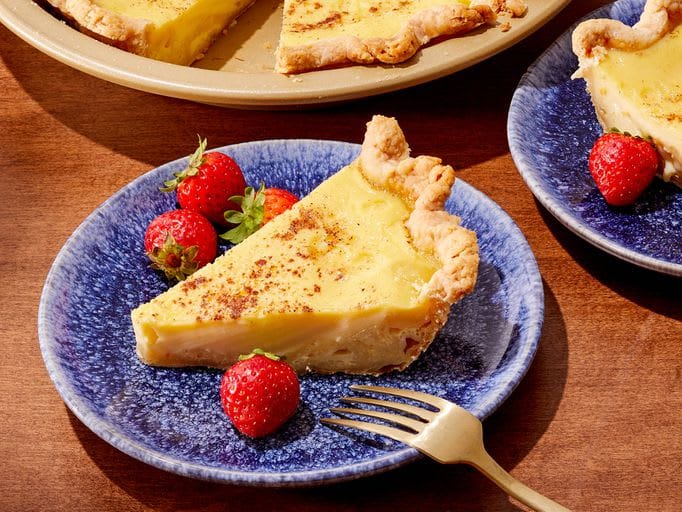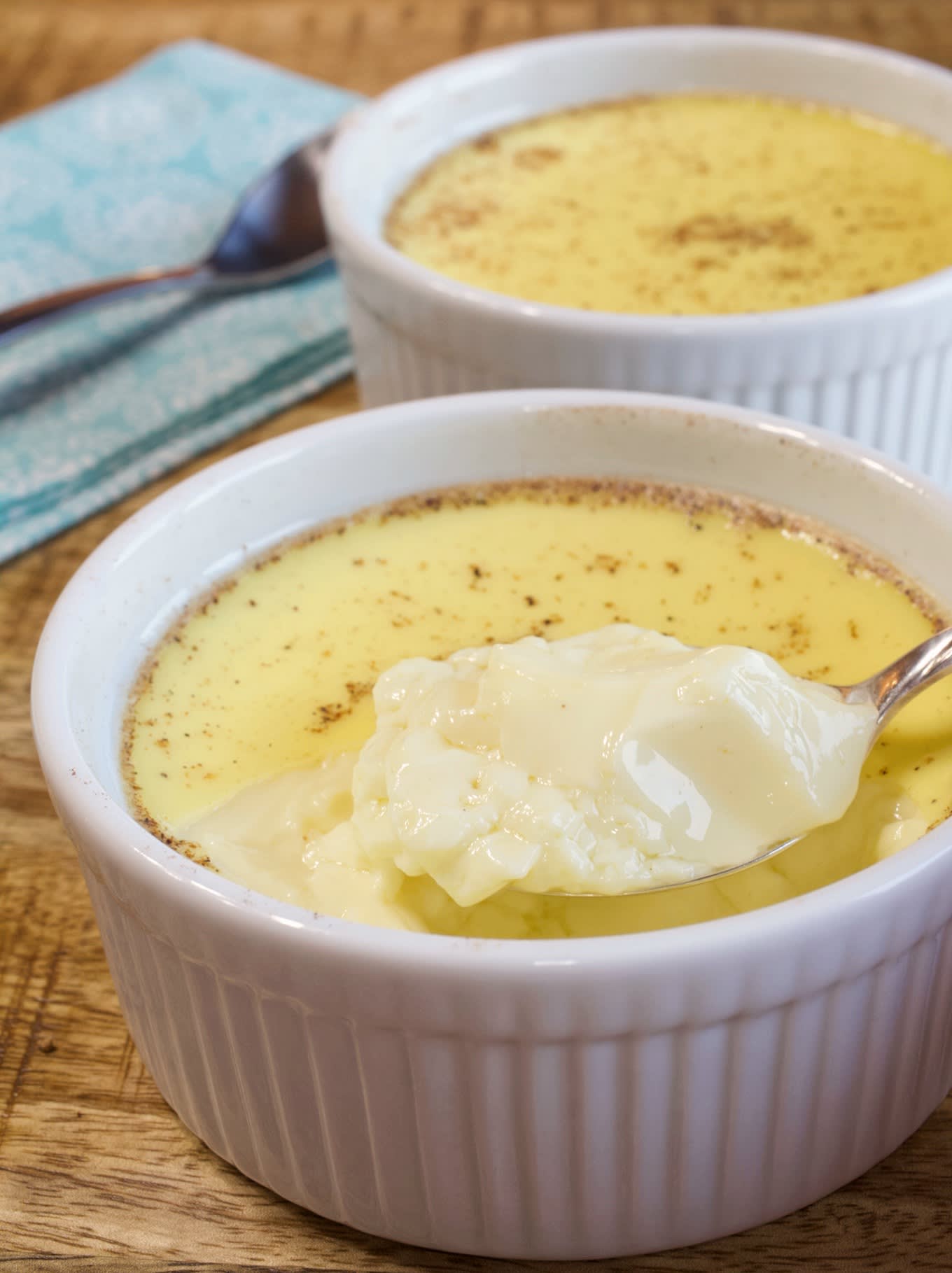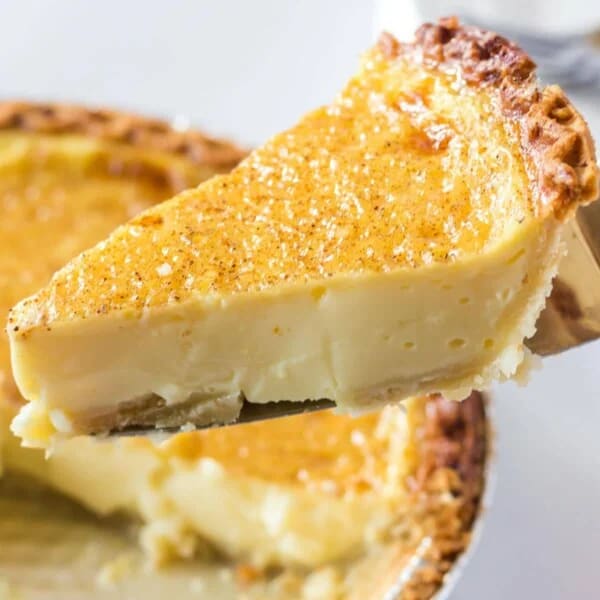Homemade Baked Egg Custard
There’s something magical about the first spoonful of a perfectly baked egg custard. That moment when your spoon breaks through the delicate surface, revealing the silky, vanilla-scented treasure beneath. This classic dessert might seem old-fashioned, but one taste will remind you why some recipes truly stand the test of time.

What makes this homemade egg custard special is its beautiful simplicity. Just a handful of everyday ingredients transform into something extraordinary – a dessert that’s simultaneously rich yet light, sweet yet subtle. The nutmeg-dusted top creates a warm, aromatic first impression before you dive into the creamy custard below, all nestled in a buttery, flaky crust that provides the perfect textural contrast.

Ingredients

For the Crust:
- 1 (9-inch) single unbaked pie crust
For the Egg Custard Filling:
- 4 large eggs
- ½ cup white sugar
- 2 teaspoons vanilla extract
- 2 cups milk
- 1 pinch ground nutmeg, or to taste

Steps

- Gather all ingredients and organize your workspace. Preheat the oven to 400°F (200°C). Having everything ready makes the process smoother and prevents mistakes when timing is important.
- Gently place pastry into a 9-inch pie plate, ensuring it covers both the bottom and sides completely. If the dough tears, simply patch it with excess dough. Crimp the edges decoratively between your fingers or with a fork for a finished look.
- Line the bottom of pastry with foil or parchment paper, making sure to press it into the corners without tearing the dough. Fill with dried beans or pie weights to prevent the crust from bubbling up. Bake in the preheated oven for 8 minutes – this is called blind baking and ensures your crust won’t get soggy.
- Carefully remove the lining and beans or weights (they’ll be hot!). Return the crust to the oven and continue baking until it’s set and looks dry but not browned, about 5 minutes. Reduce oven temperature to 350°F (175°C). Let the pastry cool for about 10 minutes while preparing the filling – this cooling period helps prevent a soggy bottom when you add the wet filling.
- To make the egg custard filling: In a medium bowl, beat eggs and sugar with an electric mixer until well combined and slightly lighter in color, about 2 minutes. Don’t overmix or you’ll incorporate too much air, which can cause bubbles in your finished custard.
- Beat in vanilla extract until incorporated. Then gradually stir in milk, adding it in a slow, steady stream while mixing on low speed until fully incorporated. Mixing slowly prevents foam formation, which can affect the custard’s texture.
- Carefully pour the custard mixture over the partially baked crust. The crust will be very full, so pour slowly and consider placing your pie dish on a baking sheet before filling to make transfer to the oven easier.
- Lightly sprinkle nutmeg over the filling – use a fine mesh sieve for even distribution. Bake in the preheated oven until the custard is set but still has a slight wobble in the center when gently shaken, about 40 minutes. A sharp knife inserted near the center should come out clean. Cover the edge of the pastry with foil for the last 15 minutes of baking to prevent overbrowning.
- Remove from oven and place on a wire rack. Cool completely before serving, about 1 hour. The custard will continue to set as it cools, so resist the temptation to cut into it too soon. Refrigerate any leftovers for up to 3 days.

Smart Swaps
- Replace regular milk with almond milk (1:1 ratio) for a dairy-free version – though the custard may be slightly less rich
- Substitute coconut sugar for white sugar (same amount) for a more caramel-like flavor profile
- Try maple extract (use 1 teaspoon) instead of vanilla for a unique twist
- Use half-and-half instead of milk for an even richer, more decadent custard
Make It Diabetes-Friendly
- Replace sugar with ¼ cup monk fruit sweetener plus 2 tablespoons erythritol to maintain sweetness while reducing carbs by approximately 12g per serving
- Use unsweetened almond milk instead of regular milk to lower carbs by another 6g per serving
- Add ¼ teaspoon cinnamon along with the nutmeg to help regulate blood sugar response
- Serve a smaller portion (cut into 10 slices instead of 8) alongside ¼ cup fresh berries for fiber that helps slow sugar absorption
Pro Tips
- For the silkiest texture, strain your custard mixture through a fine-mesh sieve before pouring into the crust
- Test for doneness by gently jiggling the pie – the edges should be set while the center still has a slight wobble (like Jell-O)
- Cool custard gradually to prevent condensation – don’t place it directly in the refrigerator while hot
- For perfect slices, dip your knife in hot water and wipe clean between cuts
- Enhance the flavor by steeping a cinnamon stick in your milk (remove before mixing with eggs)